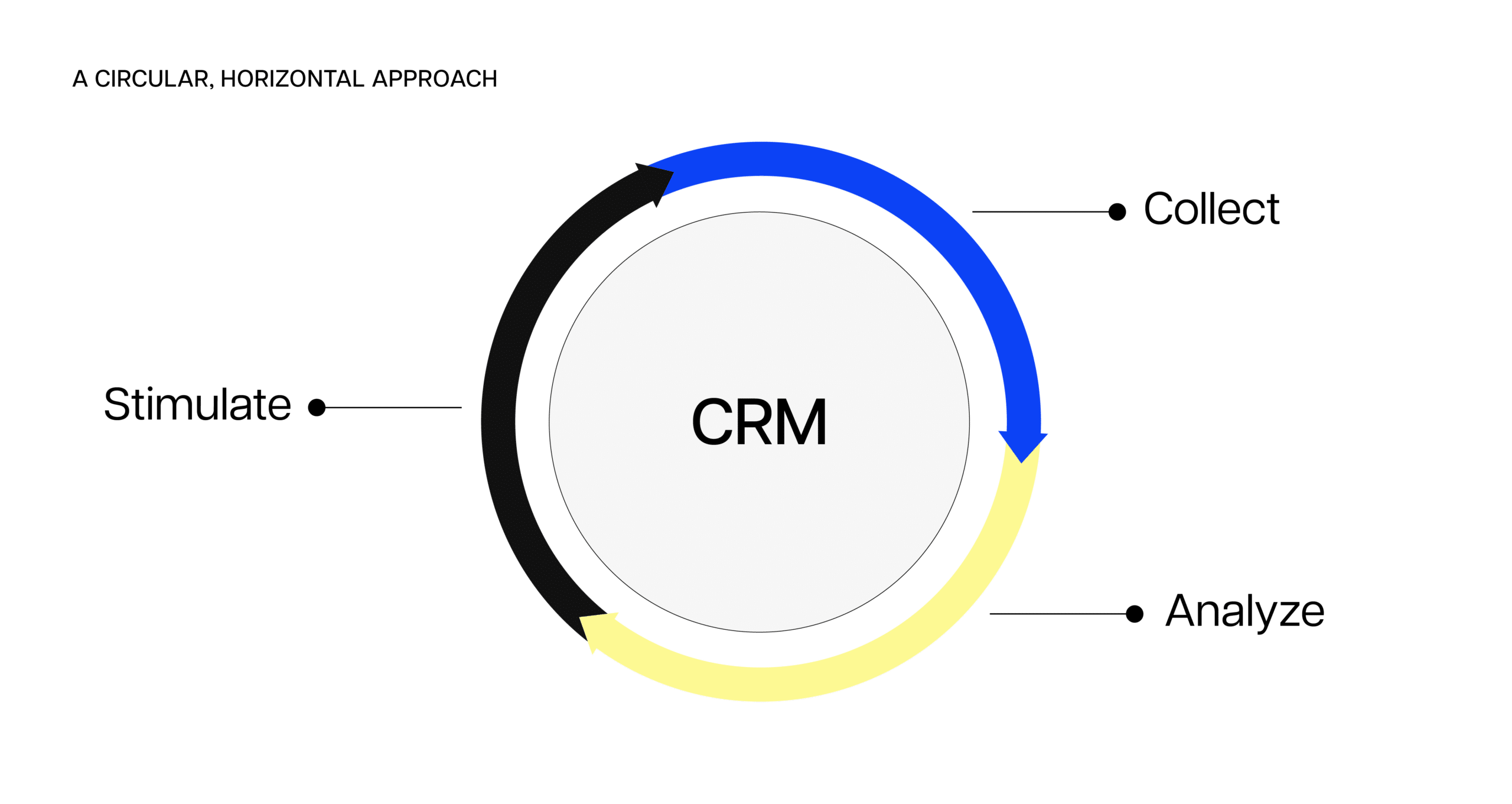How to define your CRM strategy
Customer Relationship Management (CRM) is an essential element for any business seeking to thrive in a competitive environment. A well-defined CRM strategy can not only strengthen relationships with existing customers but also open doors to new growth opportunities. This article explores the crucial steps to develop an effective CRM strategy and implement it successfully.
Understanding the foundations of CRM
Before delving into creating a CRM strategy, it’s imperative to have a solid grasp of its fundamentals. CRM encompasses tools, processes, and strategies aimed at optimizing interactions with customers. This involves collecting, analyzing, and utilizing customer data to enhance engagement and satisfaction.

CRM, or Customer Relationship Management, promotes a comprehensive view of the customer, thus providing a more personalized approach. Additionally, it helps centralize customer information, facilitating internal communication within the company. CRM also enables tracking the evolution of customer relationships over time. Finally, it serves as a valuable tool for anticipating future customer needs.
How to define your CRM strategy
Customer Relationship Management (CRM) is an essential element for any business seeking to thrive in a competitive environment. A well-defined CRM strategy can not only strengthen relationships with existing customers but also open doors to new growth opportunities. This article explores the crucial steps to develop an effective CRM strategy and implement it successfully.
Setting CRM strategy objectives
The first step in developing a CRM strategy is to define clear and specific objectives. This could include increasing sales, reducing churn rate, improving customer satisfaction, etc. Well-defined objectives serve as a compass to guide the actions to be taken.
• Quantitative objectives (e.g., 20% increase in sales over the year).
• Qualitative objectives (e.g., improvement in customer satisfaction with an NPS score of 8 or higher).
• Customer retention goals to strengthen retention.
• Prospecting goals to expand the customer base.
Identifying and segmenting the customer base
A thorough understanding of the customer base is crucial for a successful CRM strategy. Identify different customer segments based on criteria such as purchasing behavior, demographics, and preferences. This will allow for more precise customization of interactions and offers for each group.
• Segmenting by purchasing behaviour (regular, occasional, new customers).
• Segmenting by demographic criteria (age, gender, geographical location).
• Segmenting by transaction history to offer personalized deals.
• Segmenting by level of engagement (active vs. inactive customers).
Selecting appropriate tools and technologies
The choice of CRM tools is a critical step. Different solutions offer various functionalities, from contact management to marketing automation. It is essential to select a platform that meets the specific needs of your business.
Integration with other company software, such as ERPs or marketing tools, is an essential component. Additionally, there is a need for analysis and reporting capabilities to monitor the performance of the CRM strategy. Finally, customization of features based on the specific needs of the company remains crucial.
Data collection and management
Data quality is fundamental to the success of a CRM strategy. Establish mechanisms to collect accurate information and ensure secure storage. Regular data updates are also crucial to maintain their relevance.
• Use forms and surveys to collect customer data.
• Implement processes for database verification and cleaning.
• Integrate external data sources to enrich customer profiles.
Personalizing customer interactions
Personalization is at the core of an effective CRM strategy. Use the collected data to tailor communications, offers, and experiences to individual customer preferences. This strengthens engagement and loyalty.
Also, personalizing emails and product recommendations is a key element. It is also important to offer exclusive deals based on purchase history and customer preferences. Furthermore, creating specific content tailored to different customer segments is an effective strategy.
Implementing multichannel communication
Customers interact with companies through a variety of channels such as social media, emails, phone calls, etc. A well-designed CRM strategy must take this diversity into account and provide a seamless and consistent experience across all touchpoints.
Integration of social media is essential in customer relationship management. It is imperative to track and analyze interactions across all channels to have a comprehensive overview. Furthermore, swift and appropriate responses should be established on all channels. This approach ensures efficient management of customer relations, regardless of the platform used.
Measuring and analyzing results
A CRM strategy needs to be continually evaluated and adjusted based on the outcomes. Use Key Performance Indicators (KPIs) such as conversion rate, retention rate, and Net Promoter Score (NPS) to assess the effectiveness of your approach.
• Regular analysis of KPIs to evaluate the performance of the CRM strategy.
• Adjusting actions based on trends and customer feedback.
• Utilizing reports and dashboards to visualize data.
Cultivating a customer-centric culture
A CRM strategy is not limited to the implementation of tools and processes. It is crucial to create a corporate culture that places the customer at the center of all decisions.
Employee training aims to elevate customer relationship skills. It is essential to encourage teams to actively listen to customer feedback and needs. Moreover, recognizing and rewarding employees who excel in customer relationship management is important. This contributes to creating an environment where the customer experience takes precedence.
Fostering innovation and continuous evolution
The business world is constantly evolving, and customer expectations change with it. To remain relevant, it is essential to encourage innovation and ongoing adaptation.
• Competitive monitoring to identify industry best practices.
• Investment in new technologies to enhance CRM capabilities.
• Active participation in industry events and conferences to stay updated.
Involving customers in the process
Customers are a valuable source of feedback and insights. Involving them in the process of improving customer relations can lead to significant innovations.
Setting up surveys and discussion groups is done to gather customer opinions. Co-creating products or services with the most engaged customers is also considered. It is crucial to value customer feedback by implementing relevant suggestions. This approach aims to enhance engagement and improve the overall customer experience.
Integrating customer relationship management into the overall business strategy

The CRM strategy should not exist in isolation but rather integrate seamlessly into the overall business strategy.
• Alignment of CRM strategy objectives with the overall goals of the company.
• Integration of CRM data and insights into global decision-making processes.
• Establishing smooth communication between operational teams and those responsible for CRM.
By adopting these principles and following the key steps to define an effective CRM strategy, your business will be well-positioned to create and maintain fruitful customer relationships. Remember that implementing a successful CRM strategy is an ongoing process that requires long-term commitment. By staying attentive to the needs and feedback of your customers, you will be able to cultivate lasting relationships and promote the growth of your business.
Stay on top of the latest digital marketing trends.
Subscribe to our newsletter and receive the latest news, once a month, directly in your inbox.
*By entering your email address, you agree to the Billy.Social Terms of Use and Privacy Policy.
Bibliography
Burns, R. (2023, September 26). CRM goals: 4 objectives for your CRM strategy. Retrieved October 3 2023. ActiveCampaign. Online.
Riley, V. (2023, June 2). CRM objectives – 5 goals you can achieve with CRM. Retrieved October 3 2023 Insightly. Online.
(2023, September 1). What Is Data Collection: Methods, Types, Tools. Simplilearn. Retrieved October 3 2023. Online.
Deshpande, A. (2023, March 26). The Importance of Data Management in CRM for Better Business Outcomes. Retrieved October 3 2023. LinkedIn. Online.
Scondac, P. (2021, March 18). Why Your CRM is Essential to Data Collection. Retrieved October 3 2023. SugarCRM. Online.
(n.d.). Streamline Your Entire Business with a Free CRM. Retrieved October 3 2023. HubSpot. Online.
(2023, September 17). The Three Stages to Developing a Customer-Centric Culture. Retrieved October 3 2023. Gladly. Online.










